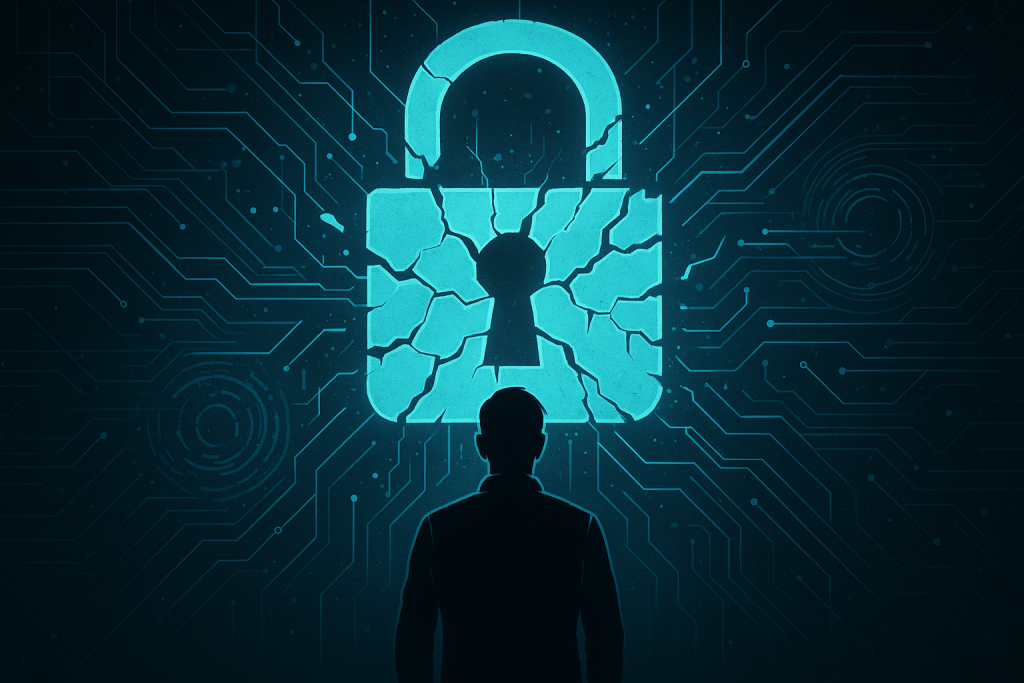The Question Everyone Is Avoiding
What would you do if everything you believed was secure… suddenly wasn’t?
That is the question cybersecurity leaders are now forced to ask. Not because of a software vulnerability or a zero-day exploit, but because of an inevitable shift already unfolding: quantum computing.
Unlike the predictable evolution of traditional software, quantum systems are fundamentally different; they approach problems in ways classical machines physically can’t, and they’re set to dismantle the cryptographic assumptions that contemporary infrastructure is rooted in.
RSA, ECC, and other asymmetric cryptographic algorithms derive their security from problems considered computationally infeasible for classical computers (i.e. factoring large primes or computing discrete logarithms). With quantum algorithms such as Shor’s Algorithm, these “infeasible” problems become solvable in hours.
The implications are profound. Think entire nations, critical infrastructure, healthcare systems, corporate trade secrets, private communications, they all become exposed if action isn’t taken before quantum computing reaches practical maturity.
The Threat Is Today
While it’s easy to assume the threat is still far off, it’s important to note that the quantum threat doesn’t need to arrive tomorrow to create problems today. State-sponsored groups are already engaging in “Harvest Now, Decrypt Later” strategies wherein they collect vast stores of encrypted data with the intent of breaking it when quantum capabilities catch up.
This includes sensitive business transactions, customer records, legal documents and confidential emails. Every day that passes without the adoption of quantum-resistant safeguards is a day that data is left vulnerable to delayed exposure.
Once that data is cracked, be it in five or fifteen years from now, the consequences are ultimately irreversible. So ask yourself this: if you’re encrypting something now that needs to remain private for the next decade, are you certain your current encryption will still hold? If the answer is no, or worse: “I don’t know”, then now is the time to act.
Post-Quantum Cryptography: A Fundamental Shift
Quantum-resistant encryption, known as post-quantum cryptography (PQC), is not an enhancement of what we already have. It’s a complete shift in cryptographic thinking, one that replaces vulnerable algorithms with new ones designed to withstand attacks from both classical and quantum computers.
These next-generation algorithms are built on different mathematical foundations, problems like lattice-based functions and error-correcting codes, that quantum algorithms cannot easily solve. NIST’s ongoing post-quantum standardisation project has shortlisted several such candidates with finalists expected to be formalised into global standards within 2025.
Among them are CRYSTALS-Kyber (for encryption/ key encapsulation) and CRYSTALS-Dilithium (for digital signatures), both lattice-based schemes (cryptographic systems built on the mathematical structure of lattices) that offer effective security with relatively efficient performance. This makes them viable for real-world deployment across everything- from enterprise applications to embedded systems.
Major technology vendors and cloud providers are already implementing hybrid encryption models where classical and post-quantum algorithms are being applied to prepare for a future where both threats must be mitigated in parallel. These standards are hence, not theoretical. They’re being trialed and integrated now.
But PQC is only part of the picture.
For most organisations, the transition to post-quantum readiness isn’t a simple matter of patching code or swapping out libraries. It requires a full cryptographic inventory. Think of it as a deep audit of where and how encryption is used across infrastructure and data flows. Every dependency must be mapped. And every risk is quantified.
This process in particular is known as crypto-agility and is the foundational mindset shift required to survive the quantum era. Systems must be designed to adapt as new algorithms and standards burgeon, making quantum readiness more than just a one-time fix.
What Security Leaders Should Do Now
So what should cybersecurity leaders do now? Let’s talk about it:
- Begin the cryptographic discovery process: identify where encryption is used, what algorithms you have in place and most importantly, which systems really on potentially vulnerable protocols (especially RSA, DSA, ECC and older TLS configurations).
- Stay engaged with NIST and industry developments: again, you may think we’re a long way off of this affecting your business but the final standards for post-quantum cryptography are expected soon. Being proactive in understanding your digital context will allow for smoother adoption and change when they’re formalised.
- Adopt a hybrid encryption model: many forward-leaning companies that do not suffer from inertia are already integrating both classical and quantum-safe algorithms simultaneously to secure long-lifespan data.
- Educate. Educate. Educate: quantum risk is not a technical issue alone. Your stakeholders should be aware of it, your legal teams, compliance officers and executive leadership. They must understand the timeline and investment required.
- Collaborate with vendors: from cloud infrastructure to messaging platforms, many third-party tools will need to be evaluated or replaced, depending on their post-quantum readiness.
Conclusion: The Countdown
Quantum computing may not be fully realised yet, but the countdown for it has already begun. The cost of waiting could become an irreversible failure.
If everything you believe is secure suddenly isn’t… will you be ready?


